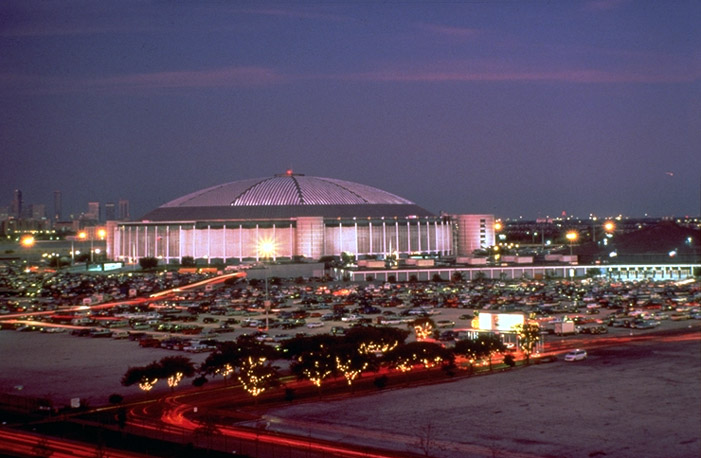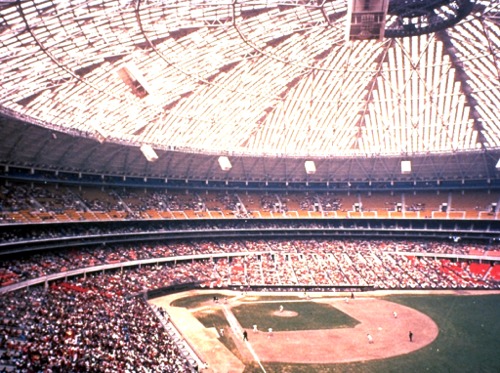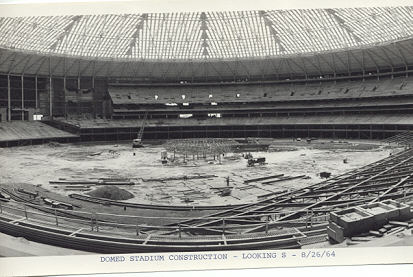


The actual dome was 18 stories above the playing field, and consisted of "Lucite" skylights, that would allow the sunlight to help grow the natural grass playing field. However, these translucent panels presented a problem. During afternoon games, outfielders were blinded by the sunlight. Thirty percent of the panels were coated with paint to reduce the problem. However another problem arose. The natural grass playing surface began to die because enough sunlight was not reaching it. A new type of turf named after the team, called Astroturf was introduced after the 1965 season. Astroturf was a green surface of nylon grass.

The Astrodome looked the same until 1989. During the fall of that year, the stadium underwent several changes. In order to increase the capacity to 54,816, the grandstands were extended into the outfield. The original scoreboard was replaced by new video boards in the upper deck. Two manual scoreboards were added as part of the outfield walls in both left and right fields. By the mid 1990's, both the Astros and Oilers began to want new stadiums. After failing to get funds for a new stadium, the Oilers moved to Tennessee after the 1996 NFL season. However, the Astros were able to get a new stadium. The Astros remained at the Astrodome for three more years. The last Astros game at the Astrodome was on October 9, 1999. In 2000, the team moved into Minute Maid Park in downtown Houston. Today, the Astrodome is home of a variety of events.

| Astrodome Facts | |
|---|---|
| Tenants | Houston Astros (MLB), Houston Oilers (NFL, 1965-1996) |
| Capacity | 42,217 (original), 54,816 (MLB), 62,430 (NFL) (final)- |
| Surface | Grass 1965, Astroturf 1966-present- |
| Construction Began | June 3, 1962 - April 24, 1965 |
| Closed | October 9, 1999- |
| Cost | $35 Million, $60 Million (expansions) |
| Dimensions(original) | 340-L, 406-C, 340-R |
| Dimensio (final) | 330-L, 400-C, 330-R |
| Architect | Roy Hofheinz |
 |  |